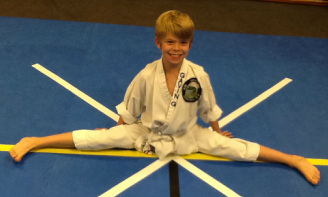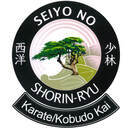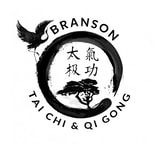 It's amazing watching an experienced karate practitioner throw a beautiful high kick over their own head. How flexible they must be! Martial artists are often known for their flexibility. But, flexibility isn't just important to performing incredible karate techniques. It also helps protect your body from injury and improves the range of motion of your joints as a whole. I sometimes hear adults say to me, I've never been flexible, even as a child, how could I possibly increase my flexibility now? I smile as I recall that I couldn't even touch my toes as a child but today, as an adult, I can do the splits. Flexibility can be learned and achieved at any age. While some people are naturally more limber than others, a stretching routine can allow any student to make progress in personal flexibility. In karate, one of the most talked about indicators of flexibility are the splits. There are two different types of "splits" -- the side splits and front splits.
I have included a couple of videos that demonstrate some excellent stretches specifically for performing the splits. Try utilizing these in your own personal stretching routine. Before long, you too may be doing the splits! If you are having trouble viewing the videos, here are the direct links to the YouTube versions: http://youtu.be/8Yd4Iag-dEA http://youtu.be/ywFJIdTSDIQ I am not being endorsed by or promoting the people in these videos. I have no affiliation with them. The videos were screened and approved for use on this blog based solely on the benefit found in the techniques demonstrated. On Nov. 28, 2012 the videos were found to contain appropriate content for the topic of this blog. As the videos are linked to from YouTube, and can be changed by the owners of the videos at anytime, I am not responsible for any changes or deletions made by the owners. If you find the videos no longer work or are not meaningful to this blog, please contact Vashon Borich.
3 Comments
 In today's martial art world, it seems the type of arts that get the most attention are the sports schools like MMA (Mixed Martial Arts), Tae Kwon Do and JuJitsu schools. I have found that although many of these schools have students (and instructors) that are technically and athletically quite good, it saddens me to see some of them have lost the essence of the martial way. I realize this isn't all martial arts schools, but I have seen a trend that has lead many martial artists away from the true meaning of karate do. The Martial Way, also called Budo, means "knowledge as a way to improve ones life and the life of others." Budo is a way of living and a way of dying. Let's look back to ancient Samurai warriors, they lived a dangerous life in which they were very aware that each day could be their last. Death was always in mind, day and night, with the understanding that with their great skill and importance as protectors of their community that they had a great responsibility. They lived each day as if it were their last day. Like the knights of the renaissance period, Samurai's followed a code of moral principals. This code of conduct or way of Samurai life was called Bushido or "the way of the warrior." Bushido tampered the violent existence of the Samurai warrior with wisdom and serenity. This code, is often unwritten and passed on verbally to be recorded on one's heart as a moral compass for living life. As a martial artist of today, I believe Bushido is still a vital part of our training. We are learning techniques that could severely injure, maim or even kill another human life. Without a strong moral compass to guide us, we risk being a danger to society. I believe that Bushido should still be taught in all martial arts schools. I feel so strongly on this that I believe students who do not exhibit the moral compass of Budo in their life should be restricted on what training they receive in the martial arts. The last thing an instructor wants to hear is that a student has become a trained bully or worse, a trained killer. If you aren't familiar with Bushido, here are the seven tenets that most martial arts circles believe were used by the Samurai: 1. Justice / Rectitude / Right Decision 2. Bravery / Courage 3. Benevolence/ Charity 4. Respect/ Courtesy 5. Honesty 6. Loyalty / Faithful / Devoted 7. Filial Piety (respect for your parents and ancestors) I believe it is our duty, as martial artists, to ensure the Budo code isn't forgotten. We should do this not just with words, but through living out the tenets and traveling the Martial Way. |
AuthorVashon Borich-Leach, Sensei teaches traditional karate and tai chi in Branson, Missouri. She considers herself a life-time student of the arts. Her blog is an open journal of lessons learned in the martial arts. If you are a martial artist and would like to contribute to her blog please contact her. Archives
May 2023
Categories
All
©2012 Branson Karate & Kobudo™
|
©2010-2024 Vashon Enterprises LLC, DBA Branson Karate™
 RSS Feed
RSS Feed

